An Eye for the Storm
Photographer Stephen Locke has learned to be in the moment with super-cell storms
Julie Denesha | KCUR
Since the moment Stephen Locke photographed a thunderstorm rolling across the Flint Hills in 1989, he’s been obsessed with capturing the power and beauty of weather systems. More than twenty-five years later, Locke spends six to nine months of the year racing from storm to storm creating timelapse videos of the super-cell thunderstorms that are unique to our part of the country.
Earlier this month Locke won a notable book award for Chasing Weather with co-author Caryn Mirriam-Goldberg at the Kansas Book Festival.
Earlier this month Locke won a notable book award for Chasing Weather with co-author Caryn Mirriam-Goldberg at the Kansas Book Festival.
The beauty of great power
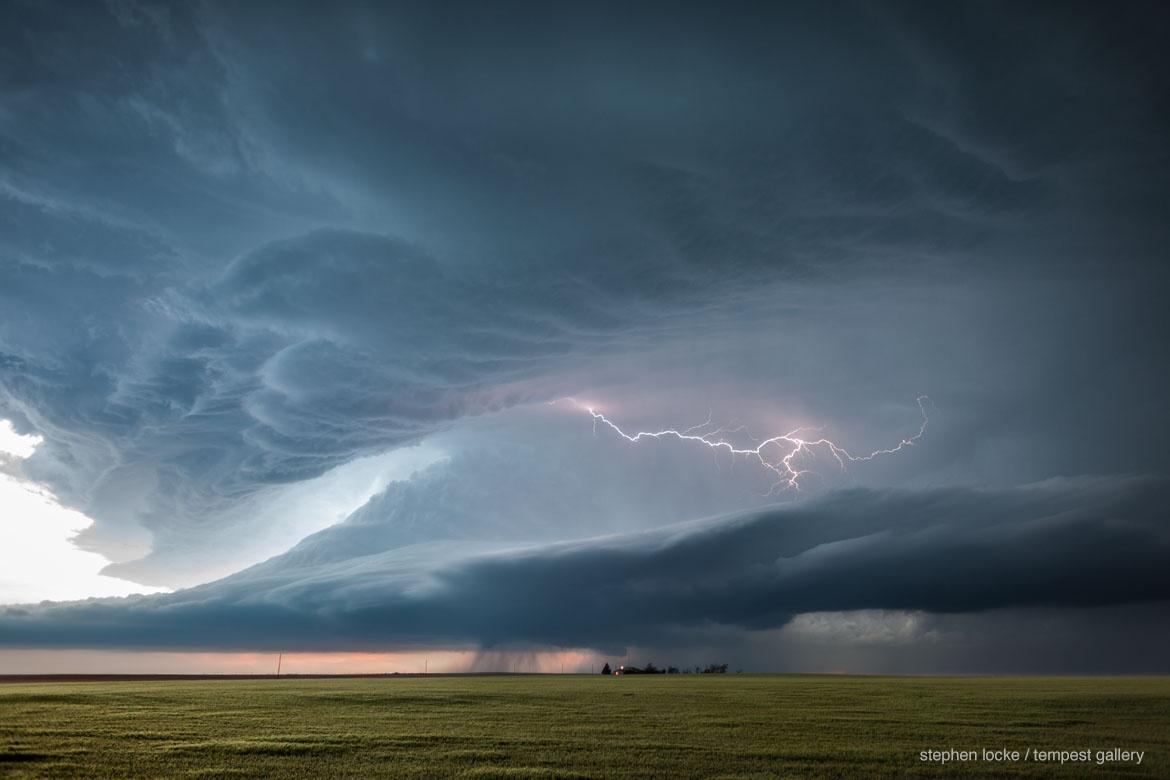
“One of the things that’s beautiful in this world, one of these things, as humans, that we find beautiful is power, great power,”said Locke. “And thunderstorms have great power. And so as we watch a thunderstorm coming across the plains, the rain is falling and that is nurturing the soil and the crops. But at the same time, you have torrential rain, and destructive hail, and deadly lightning. So when you are watching a super-cell thunderstorm, with or without a tornado, you are watching the act of creation and destruction simultaneously.”
Arriba, Colorado on June 4, 2014
The strongest storm in the world over land
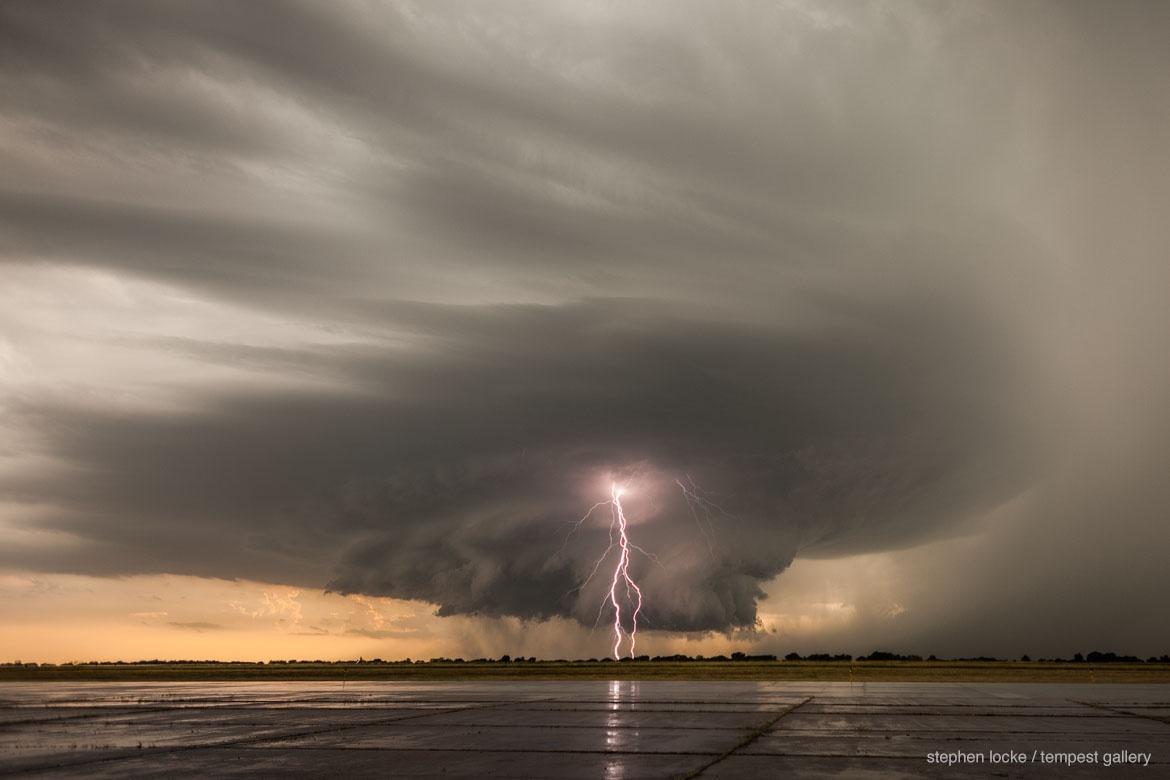
"I’m on the airport tarmac as this supercell makes an approach toward the runway. This was an elegant looking storm yet terrifying with a constant barrage of deadly lighting. Innumerable cloud to ground bolts were descending violently all around me. But I was held rapt and fell in love with this storm. The structure was amazing — very reminiscent of the Watonga Supercell in 2009."
“Storms, of course, are very dramatic and very exciting, especially on the Great Plains,” Locke said. “Oklahoma, Kansas, Nebraska, those center states right through the middle of the country. These have the strongest storms in the world.”
“Well, the season is generally springtime into early summer,” Locke said. “That’s when the atmosphere is most volatile and capable of producing super-cell thunderstorms.”
Arkansas City, Kansas on September 1, 2014
'Severe storm forecasting is just a tool'
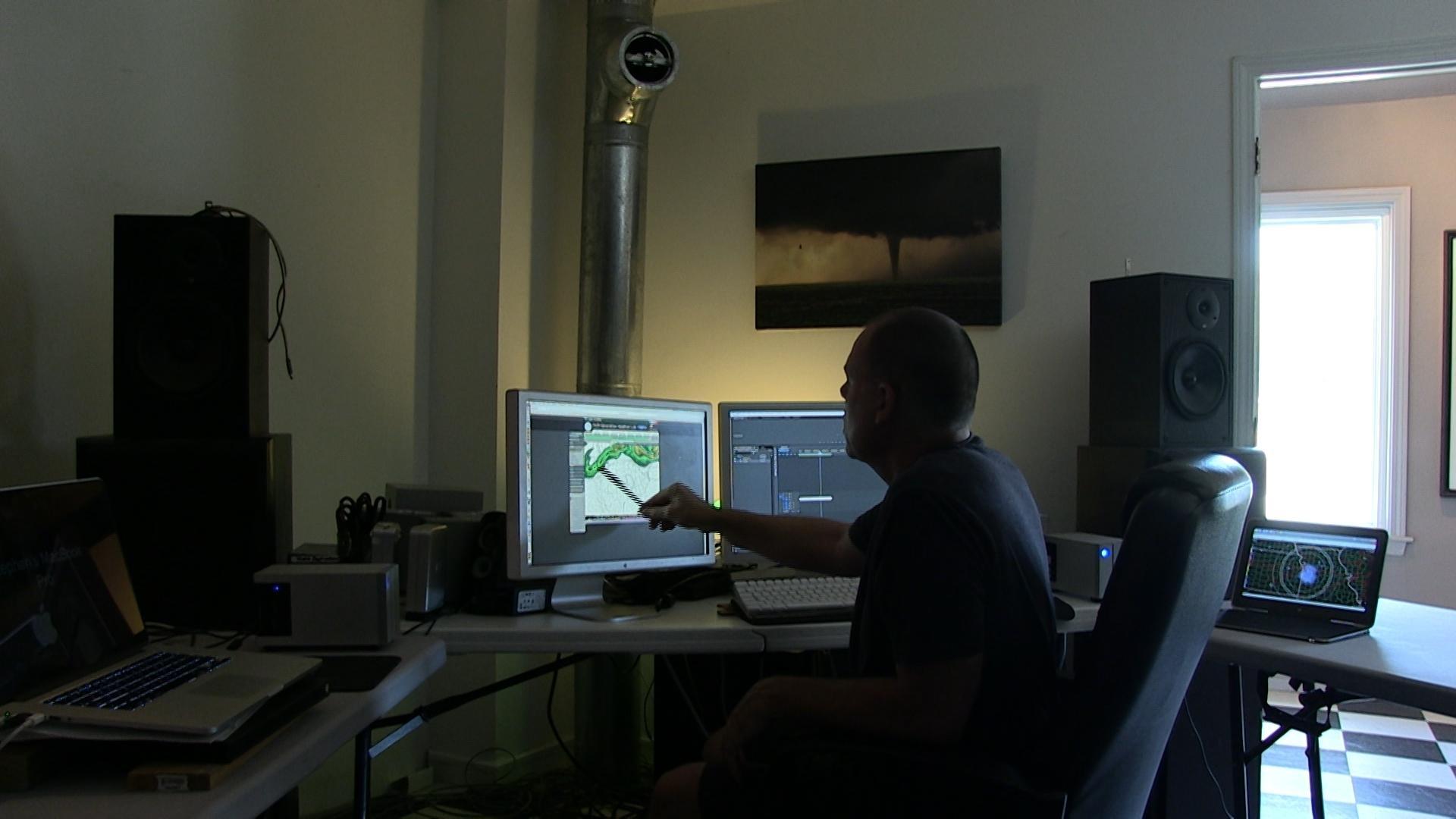
“The first thing I do when I get up in the morning is forecast,” said Locke. “There is some basic data that I look at. I try to give myself a sense of what the atmosphere looks like ten days out, five days out, three days out. Severe storm forecasting is just a tool to get you in close proximity of the storm. Ultimately, my main purpose in being there is art.”
The chase
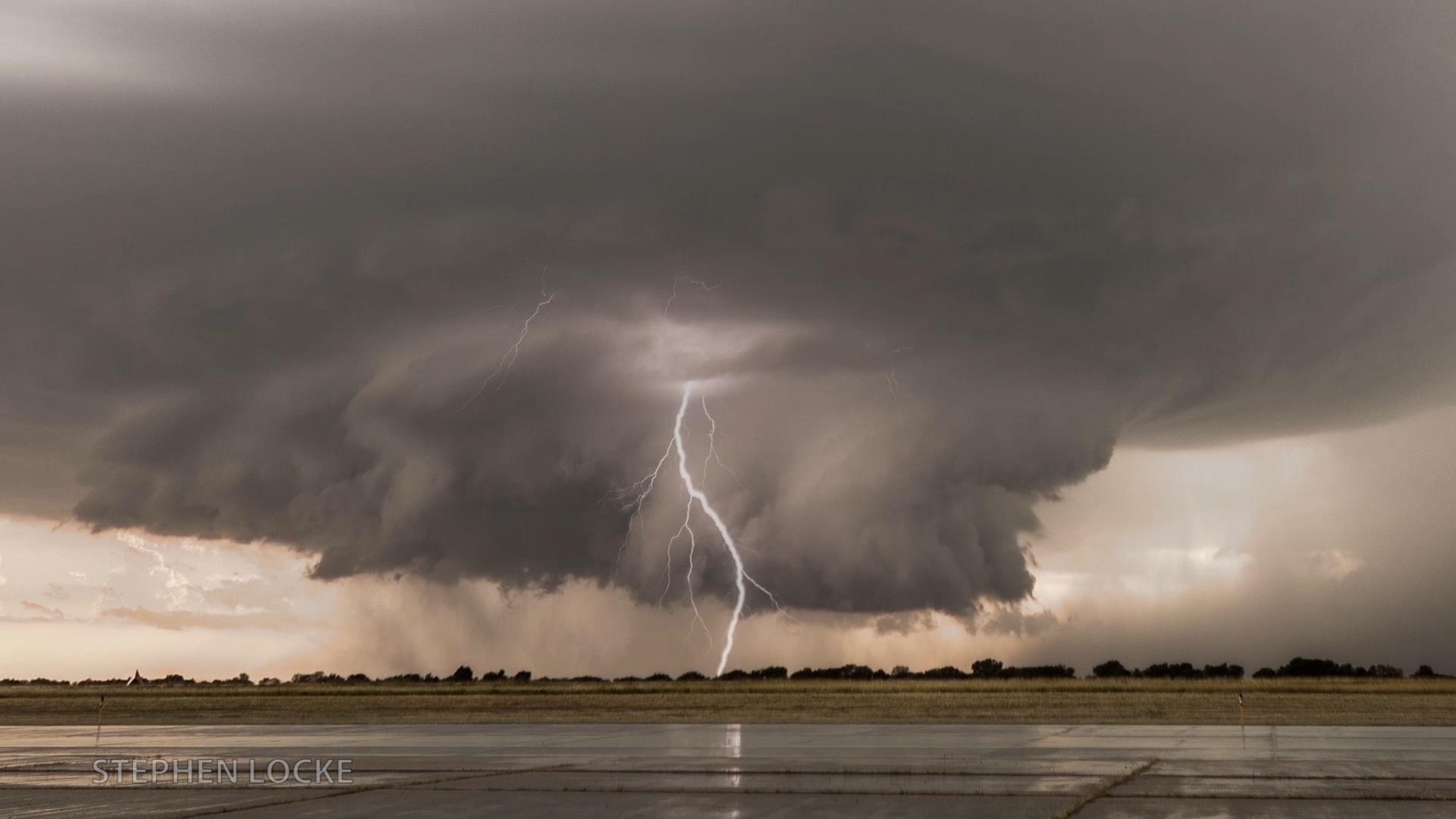
Locke headed out recently on a late-summer chase with fellow photographer Shane Kirk. As the two traveled towards Omaha, Neb., the storm took a turn into Kansas. With Kirk at the wheel, Locke navigated and tried to get them ahead of the storm.
Heavy rain hit the windshield as their car cut through the storm. “I betcha this may be the storm that moves into Kansas,” Locke said as Kirk gripped the wheel. Kirk took a moment to stretch his hands after several hours of intense driving.
“It’s from gripping the wheel,” said Shane with a laugh. “Just a little tense.”
“When you’re in chase mode, and you’re watching these storms develop, you’re in a hurry to get the right shot,” said Kirk. “A lot of times, I don’t get to fully enjoy the storm until later on when I look at those images or when I look at Stephen’s timelapse.”
Looking for the perfect landscape
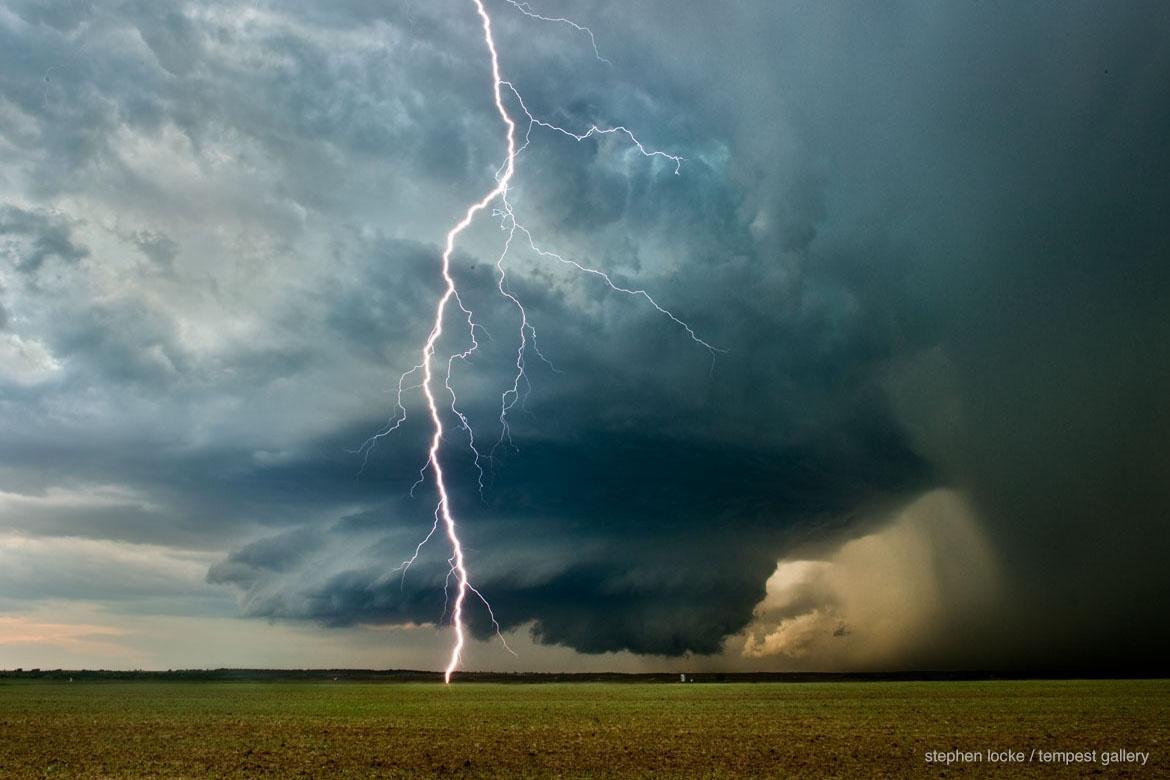
“You have to work quickly and and it is difficult to compose the image quickly particularly because you are driving into a landscape that you’ve never looked at before,” Locke said. “You don’t know what’s over the next horizon and the storm is evolving rapidly. And so you have to jump out now and make it happen.”
The Watonga Supercell in Oklahoma on August 17, 2009
Occasional gifts from the universe
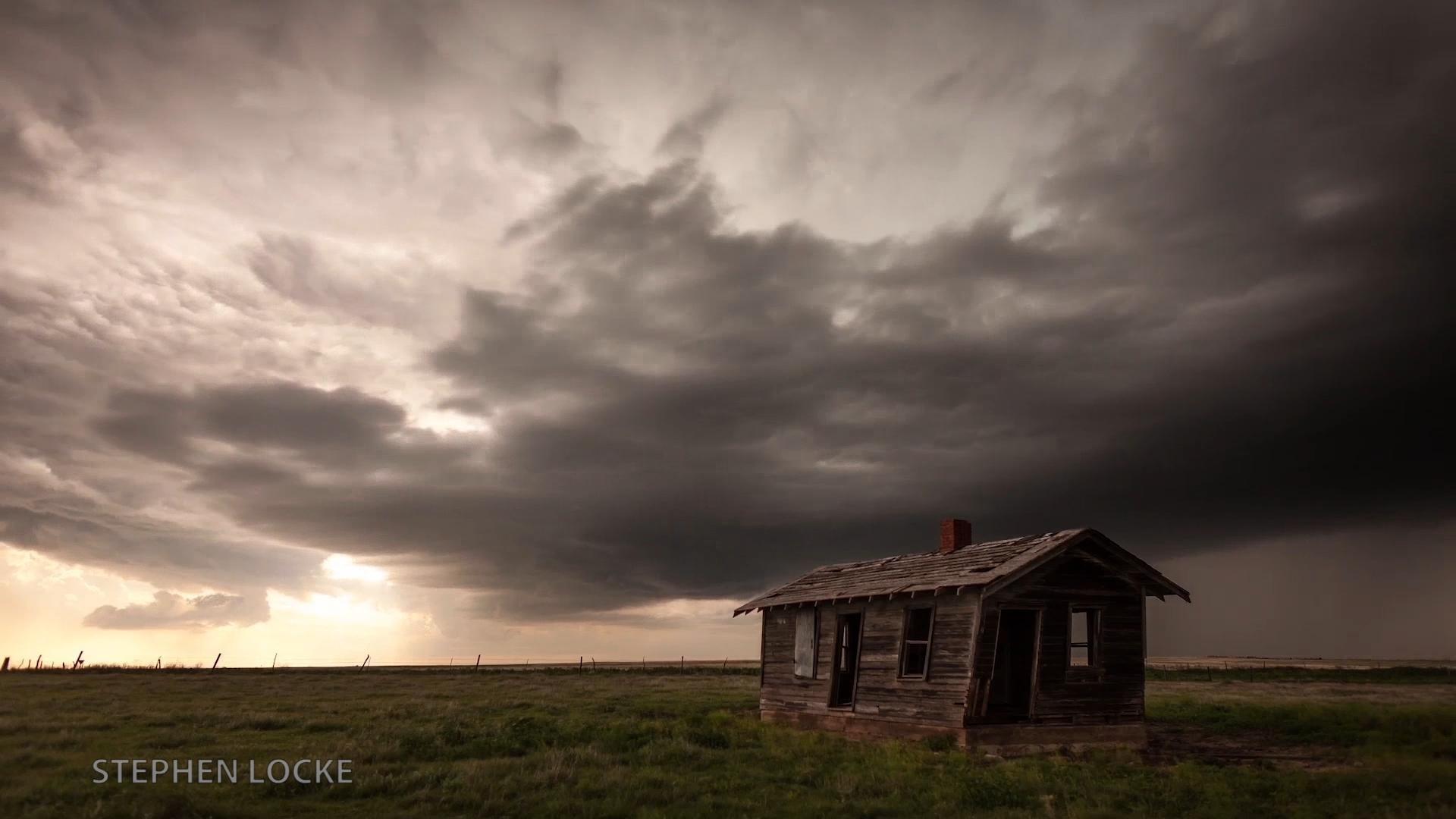
“Sometimes I’m lucky,” Locke said. “I’ve been oftentimes looking for a spot to shoot a storm and then there will be this cute abandoned little building, a gift from the universe (laughs) and I pull up and put that into my shot.”
“I like for myself, and for my viewers, to see how the storm evolves,” said Locke. “ I want people to be able to look at my timelapse movies and say, ‘Yeah, I can see how a super-cell moves.’”
All the elements have to be right
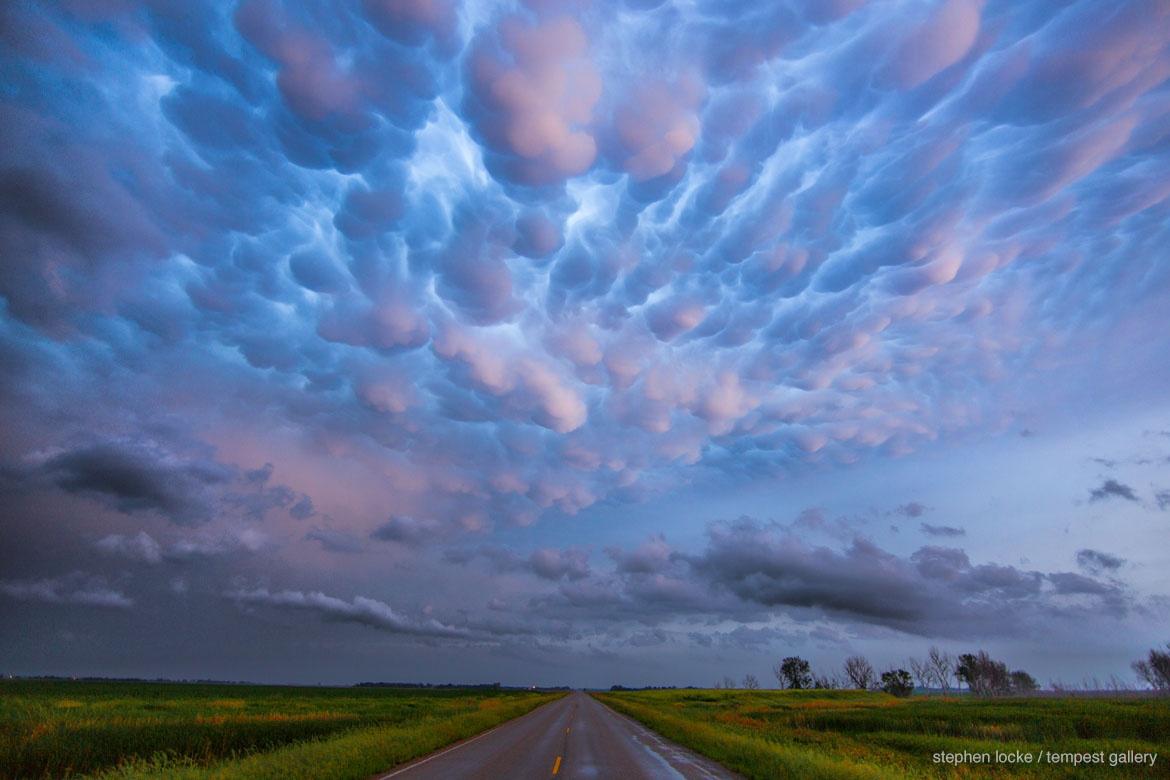
“There are chases we go on where it might be a cat bust,” said Kirk. “You know, the storms just don’t develop. Everything looks good. The ingredients are there. Sometimes it just doesn’t happen, but when it does, it’s very rewarding.”
Locke and Kirk peer through the windshield to see a developing thunderstorm near Home, KS. “Oh wow,” said Kirk. “Check that out. That actually looks really nice.”
Mammatus clouds in Huron, SD.
Locke is 'amazing to watch'
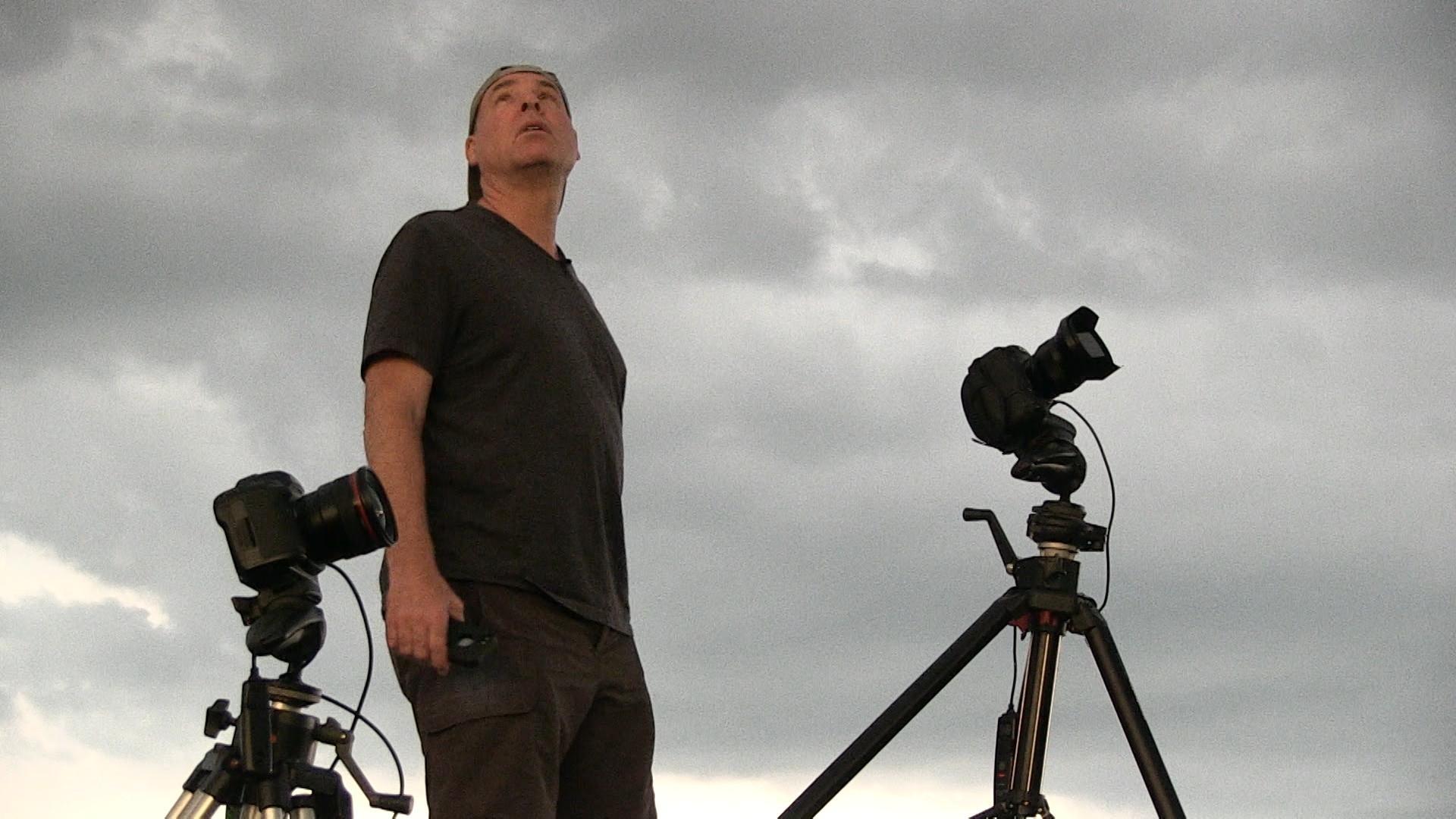
“There’s a lot of work in what Stephen does.” said Kirk. “It’s amazing to watch him set up two, three cameras, you know. He’s got a few different things he uses and gets his tripods out.”
Disappointment turns to excitement
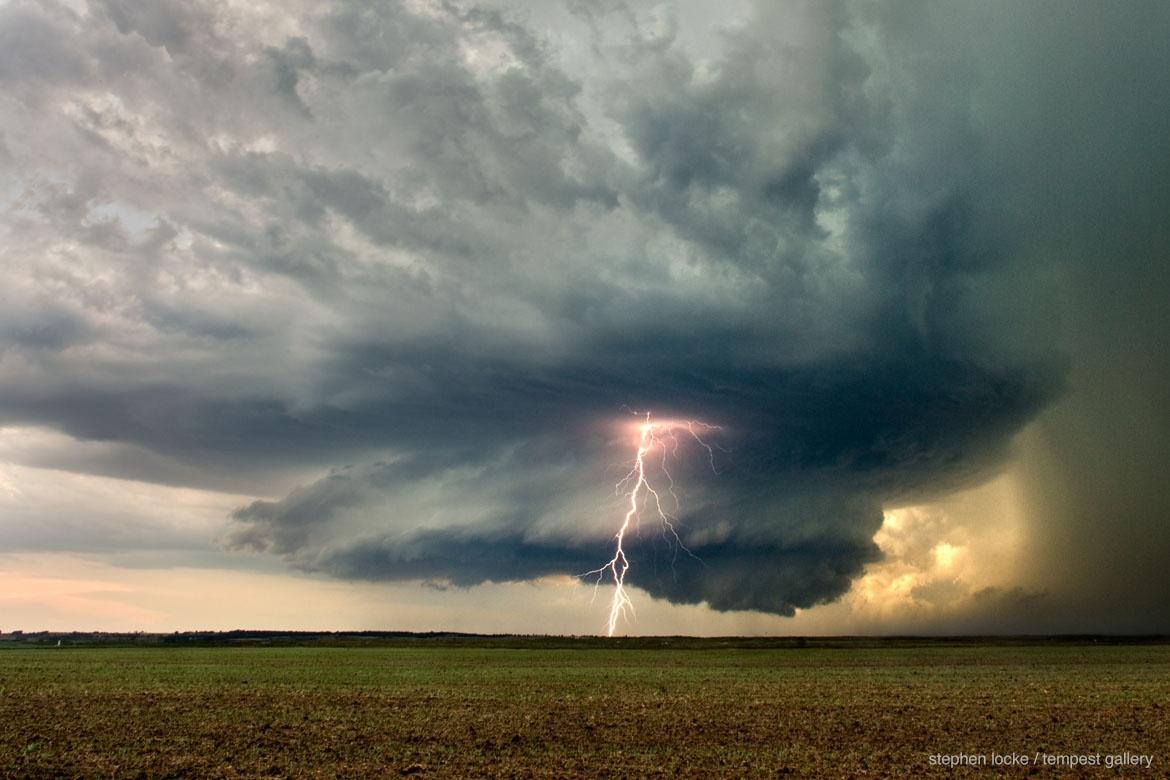
“I was initially disappointed in the structure of that storm, and at the time I was shooting it I didn’t really feel good about what I had,” Locke said. “But when I got back and looked at the images and the timelapse on the computer screen, I actually was pretty impressed with the quality of the light coming from the sunset. We had that warm, Alpenglow, that warm, sweet light. And the storm has got enough movement and enough gorgeous light that I actually think it’s a nice timeplapse.”
The Watonga Supercell in Oklahoma on August 17, 2009.
Documenting a shelf cloud moving over KC
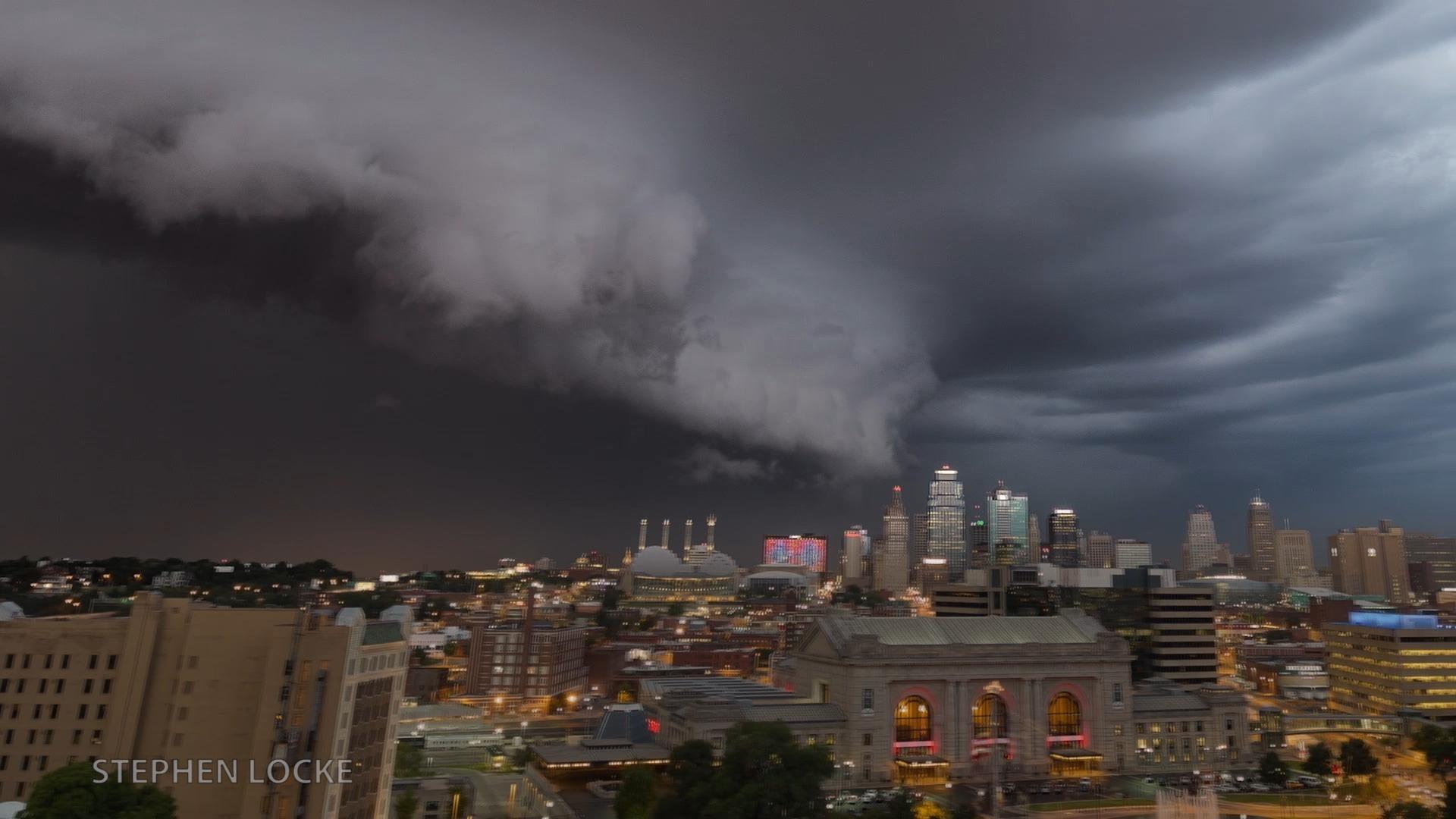
“For years, I had always wanted to shoot a shelf cloud coming over the downtown area,” said Locke. “So for many years I’ve been running down to Liberty Memorial to shoot storms coming over the city. I remember wondering should I go, should I not go? And so ultimately just on a whim I ran down there and it turned out to be a really beautiful storm. And that was a storm that impacted a lot of people in the metro area because I think that was a Friday evening. You know, it was one of those Friday nights where everybody’s out on the town and everyone’s watching this very scary cloud come over the city.”
Being absolutely present in the moment
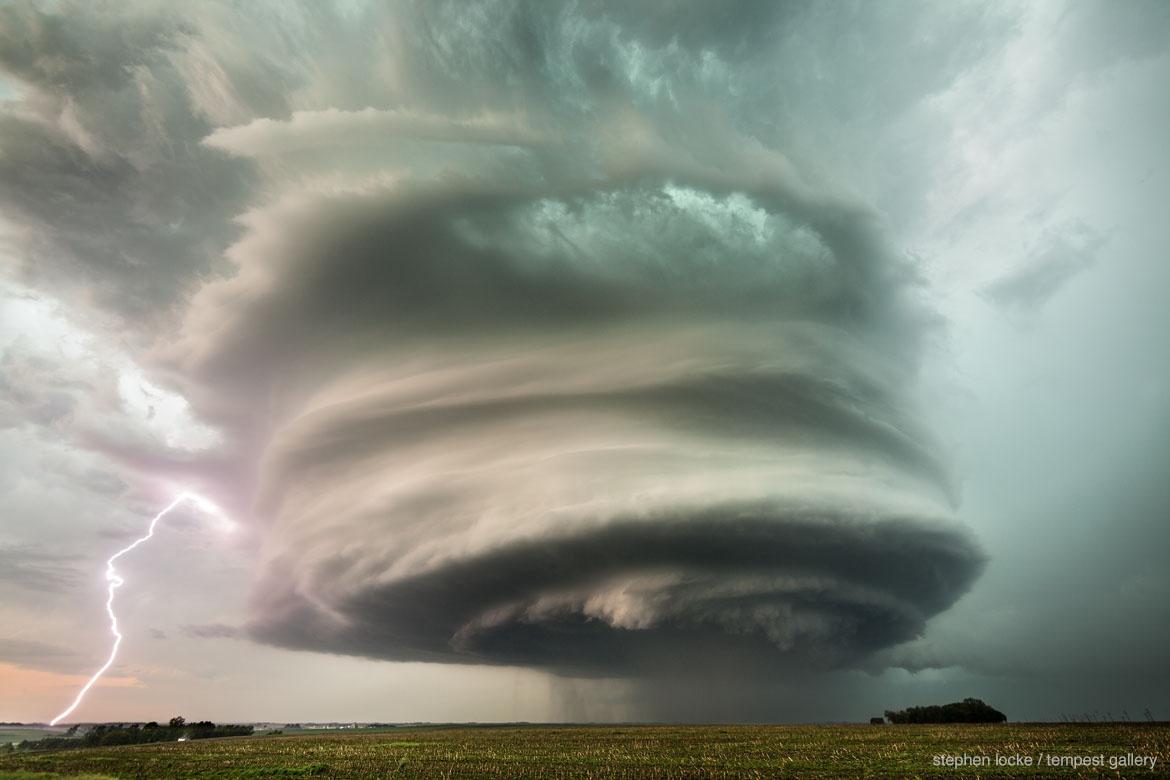
“I love super-cell thunderstorms,” Locke said. “Nothing gets me present the way a super-cell thunderstorm does. In fact, I can remember some of the very earliest experiences I’ve would have in the middle of nowhere with thunderstorms at night. I’m having this euphoric, spiritual experience. Over time I’ve learned that just means that you are absolutely present. The past dissolves, the future dissolves and you’re absolutely present with what is.”
The now legendary West Point, Neb., Supercell. June 14, 2013. The storm being nearly stationary, I set the camera on a tripod and fired away for 30 minutes never needing to recompose the image as the mesocyclone rotated in place. It might have continued another hour but was consumed during its prime by a much larger thunderstorm complex approaching from the west.
